Flowcharts: For My Fellow Nerds with Big Feelings
When I was in my early twenties, I got really into working on my mental health. I had been in a dark place (see my essay Grounded), and I needed a way out. I read books, went to therapy, spent a lot of time praying in the woods, and documented everything I learned in this precious journal.
One of the more unique tools I developed was a set of flowcharts, each addressing a distinct emotion: sadness, anger, hopelessness, and so on. It was a way to put the self-compassionate language I was learning to good use, implement my coping mechanisms, and help myself get unstuck when I was overwhelmed.
Here are some of the flowcharts I made:
TIRED
SAD
HOPELESS
SELF-HATRED
ANGRY
OVERWHELMED
HOW TO MAKE A FLOWCHART
After seeing these examples, you may be interested in making your own flowchart. I have outlined my process in four steps.
Step 1: Brainstorm a list of difficult emotions
Here is mine:
Step 2: Brainstorm a list of coping mechanisms.
Here is my list. If you’re looking for inspiration, see this article on Coping Bags.
Step 3: Make a draft
Choose one emotion and sketch out a rough draft. Think about what questions come up for you when you are struggling with that feeling. Maybe they are questions about the emotion itself (Where is this anger coming from?) or about the environment (Is it too loud in here?).
My recommendation for drafting is to use pencil and paper, working lightly so you can erase and move things around.
There are also many online resources for making flowcharts, like Draw.io or Canva, as well as AI tools like Whimsical. You might appreciate being able to move things around digitally.
You don’t need to know anything about flowcharts to create your own, but if you like following rules, here is the Wikipedia page on flowcharts.
I haven’t made a flowchart in years, so I made a new draft:
Step 4: Revise your draft and make it pretty!
For the sake of trying something new, I made my finished version digitally using Miro. As you can see, it is far from perfect, but I do believe it has some useful tips for when pain-brain takes over.
Use digital tools or colorful pens and pencils. Put your finished product somewhere you will remember, maybe posted to the wall or in an important journal. Pull it out when you are feeling stuck.
If you liked this article, you might be interested in this article about Coping Bags I wrote last winter.


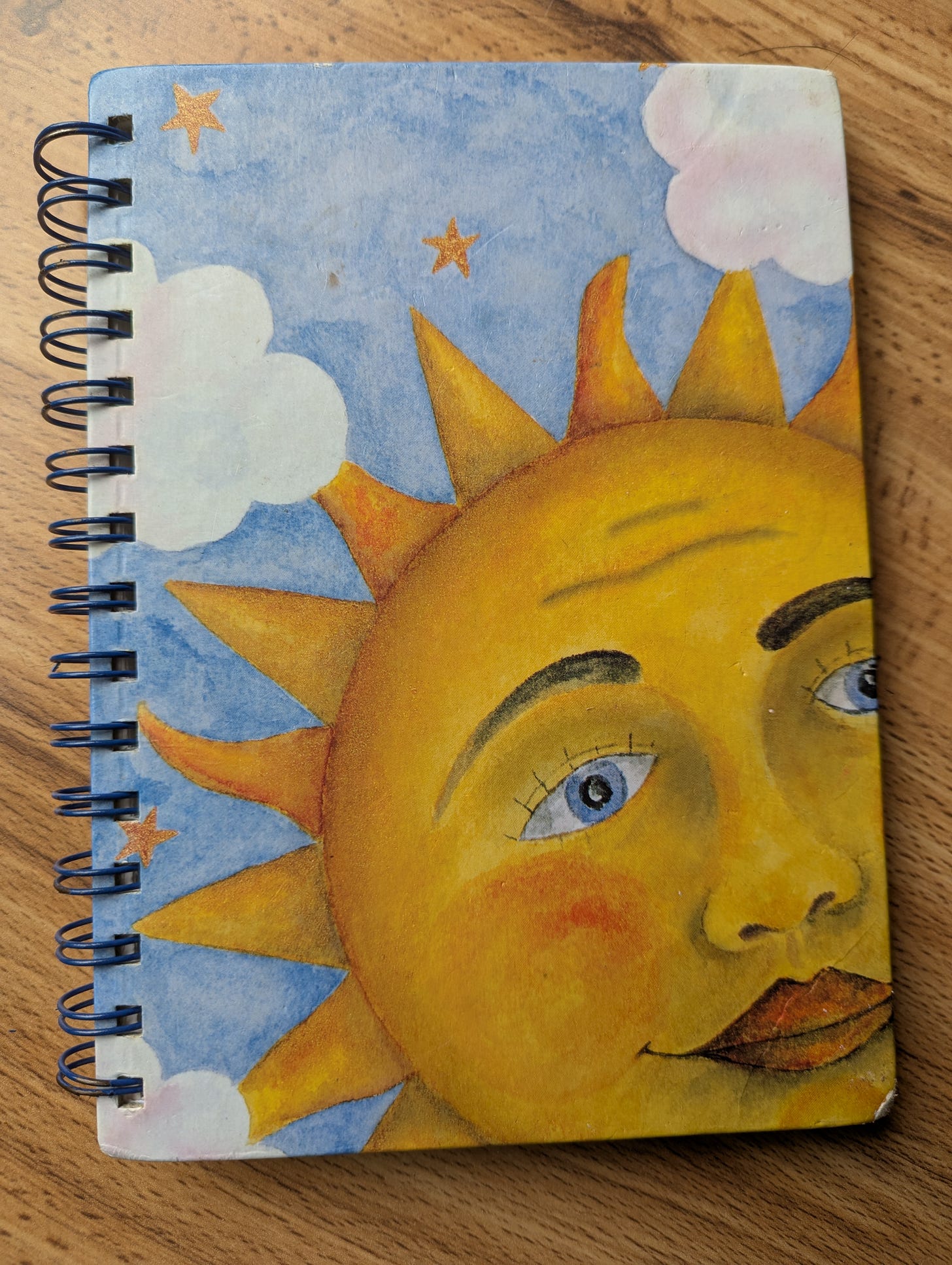
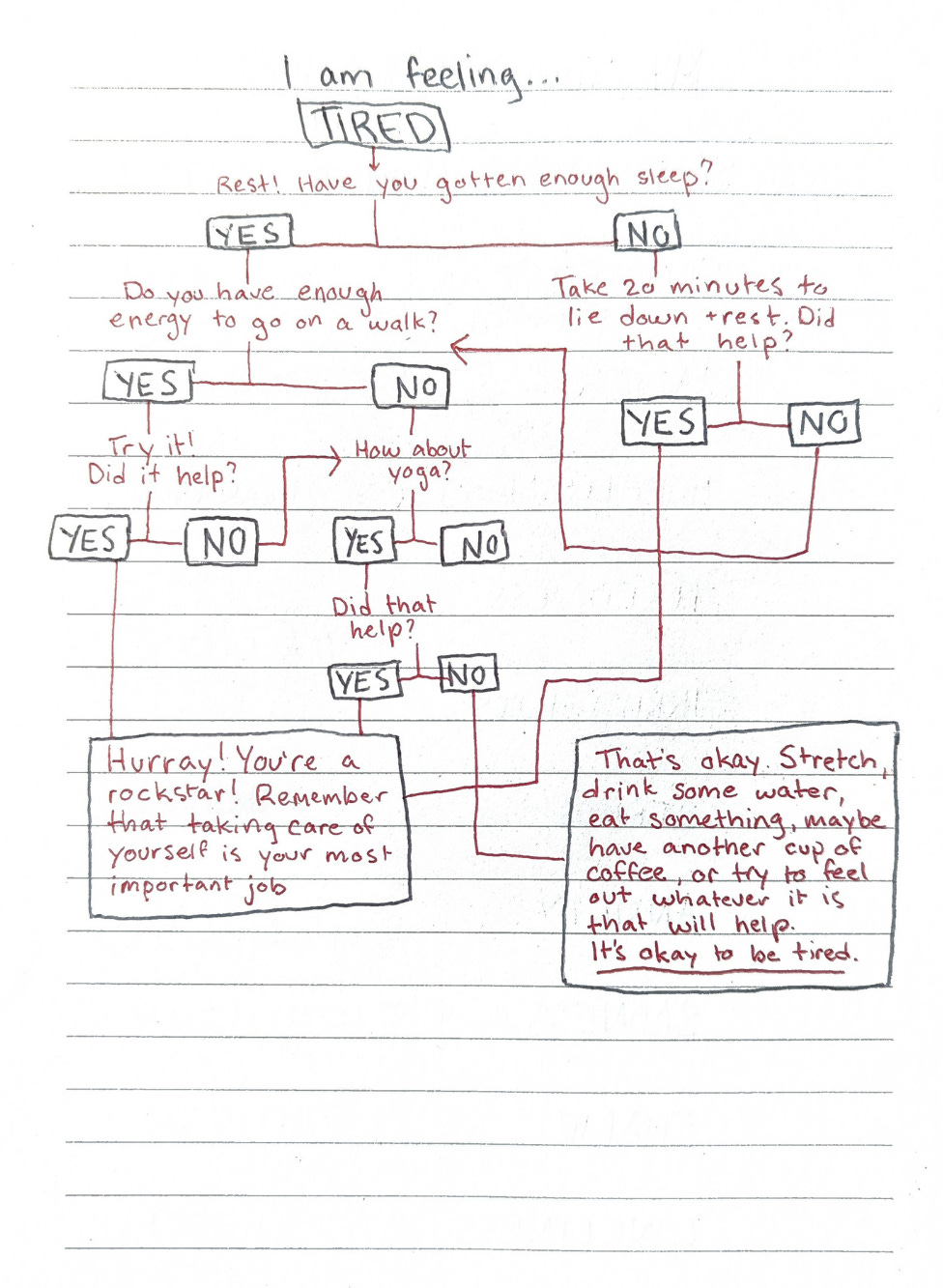
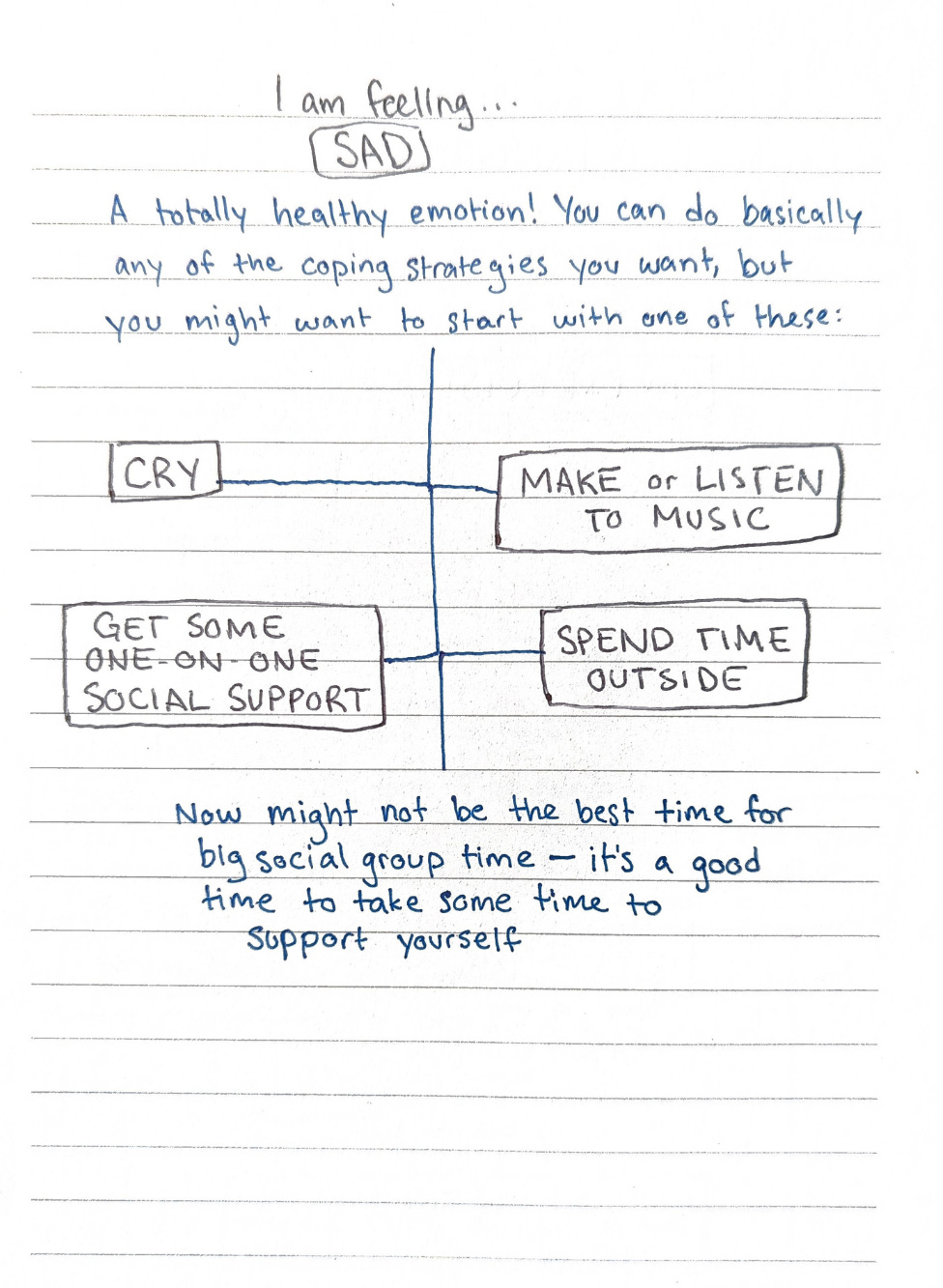
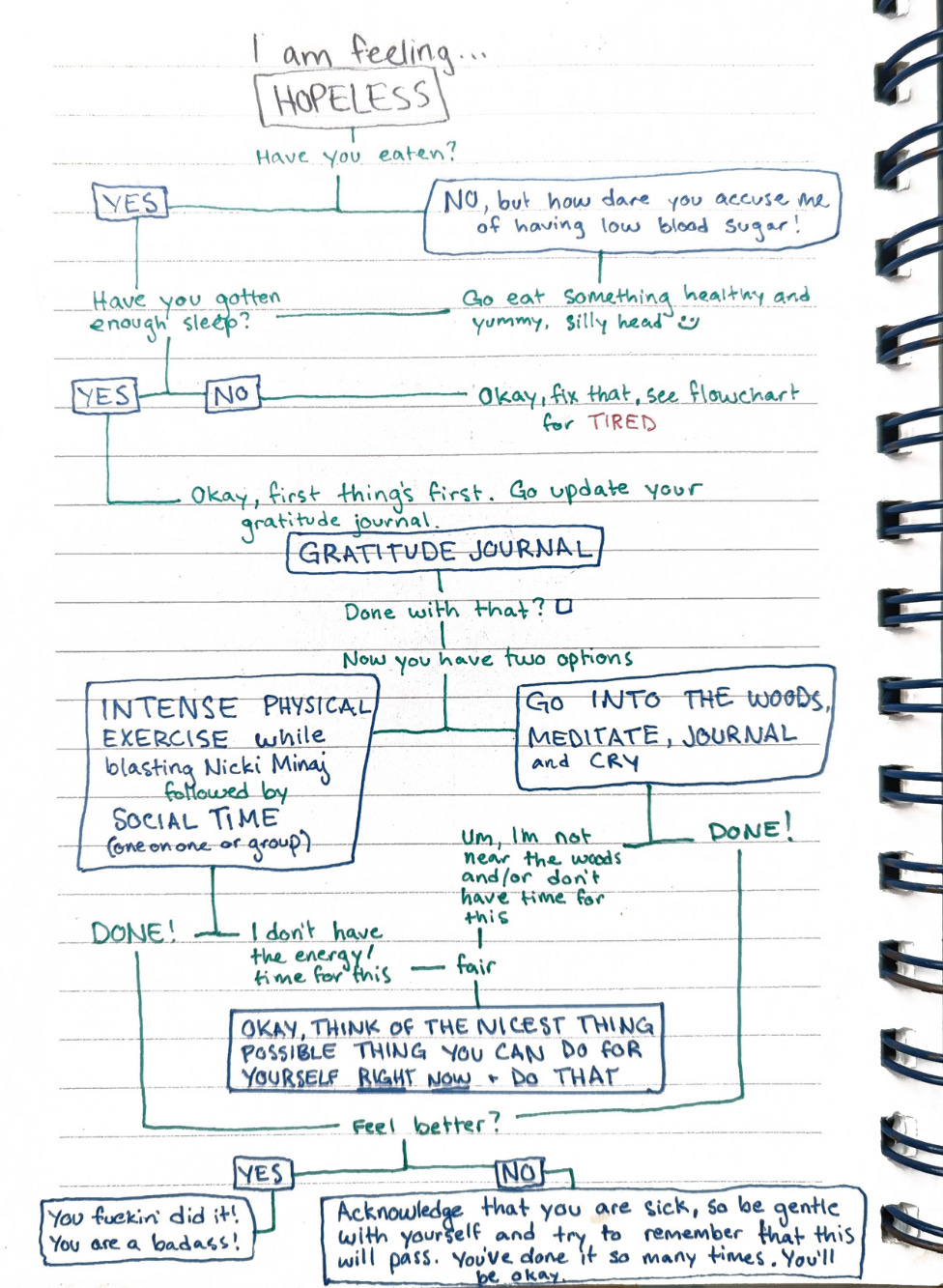
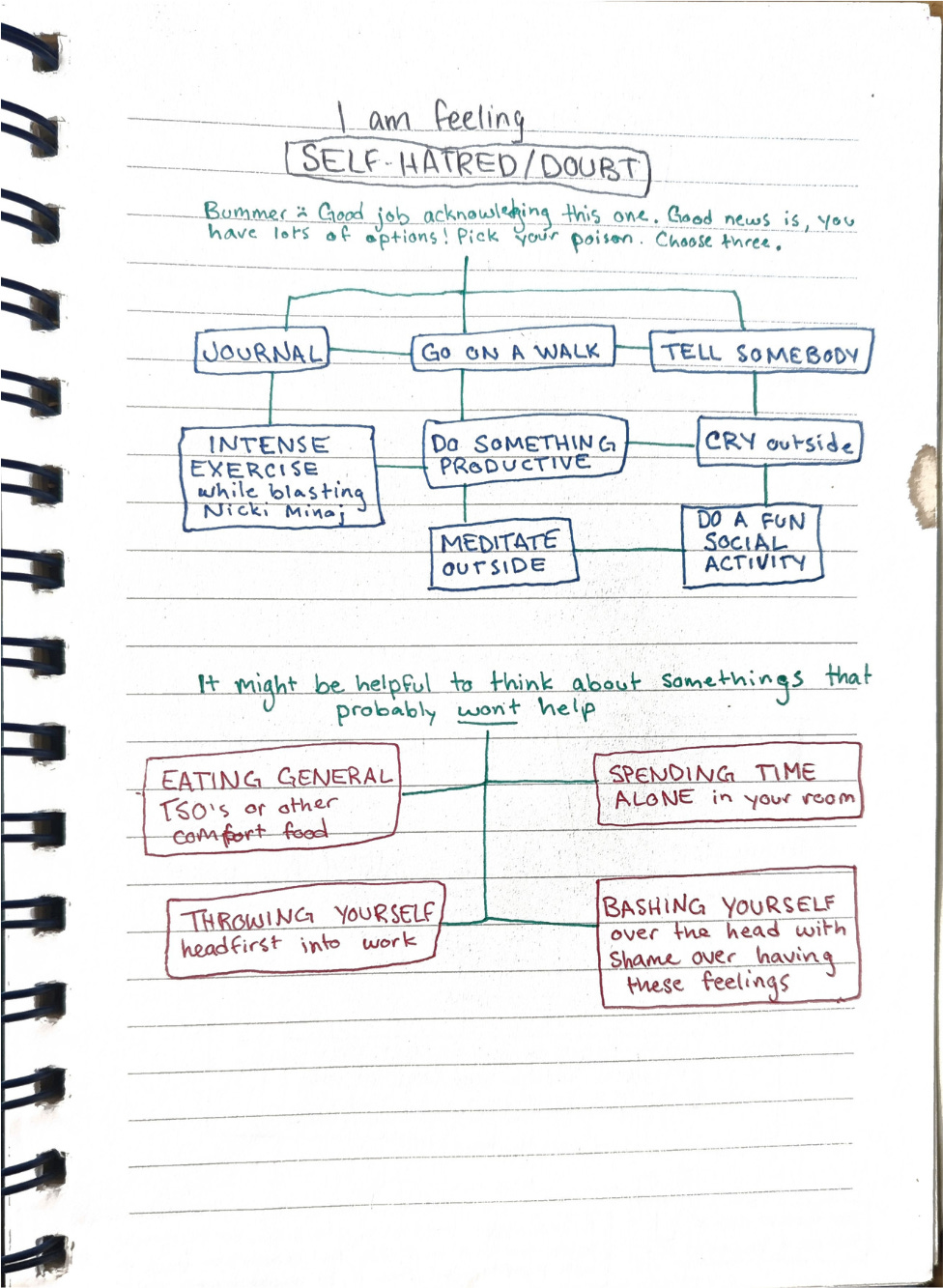
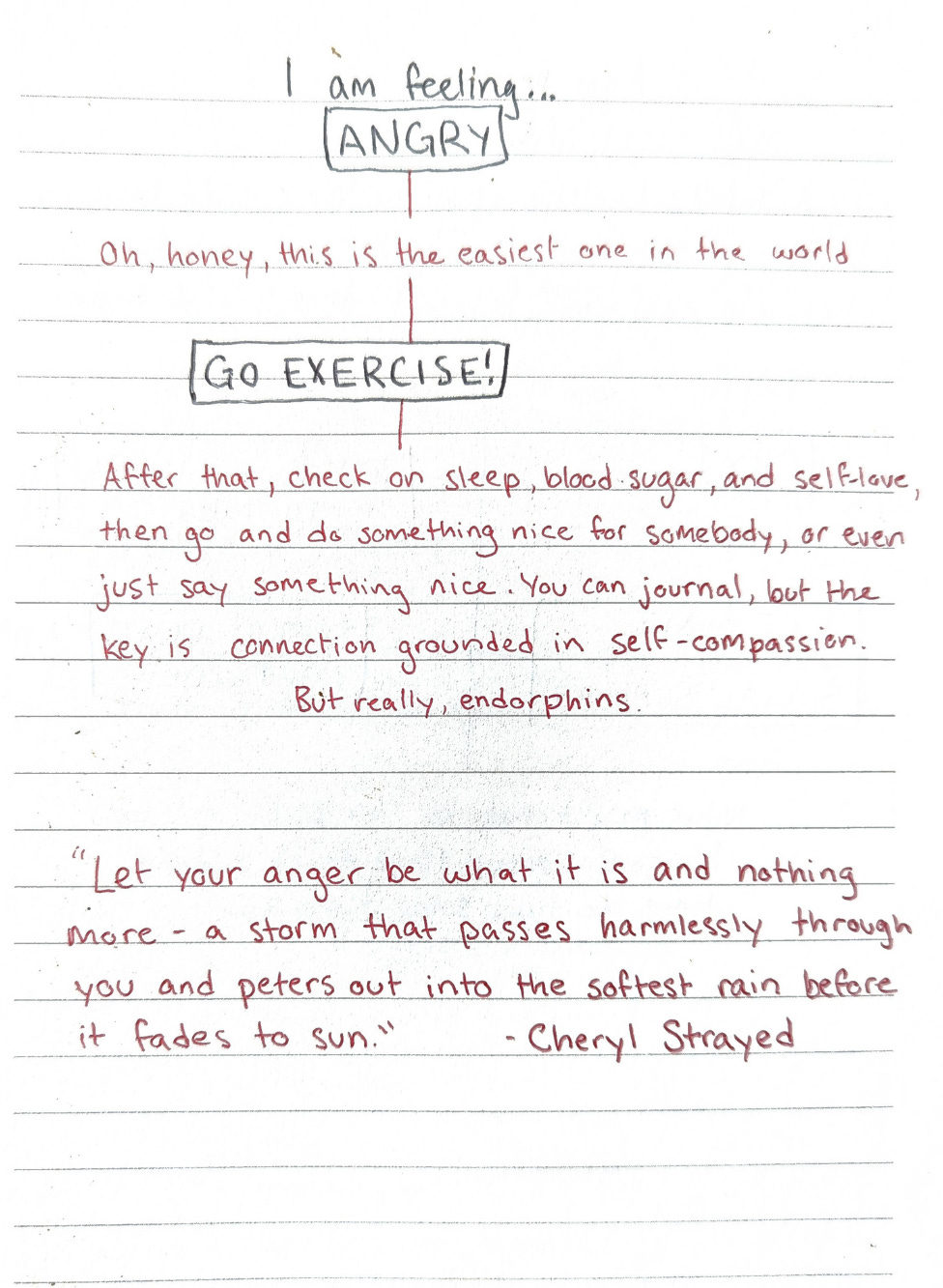
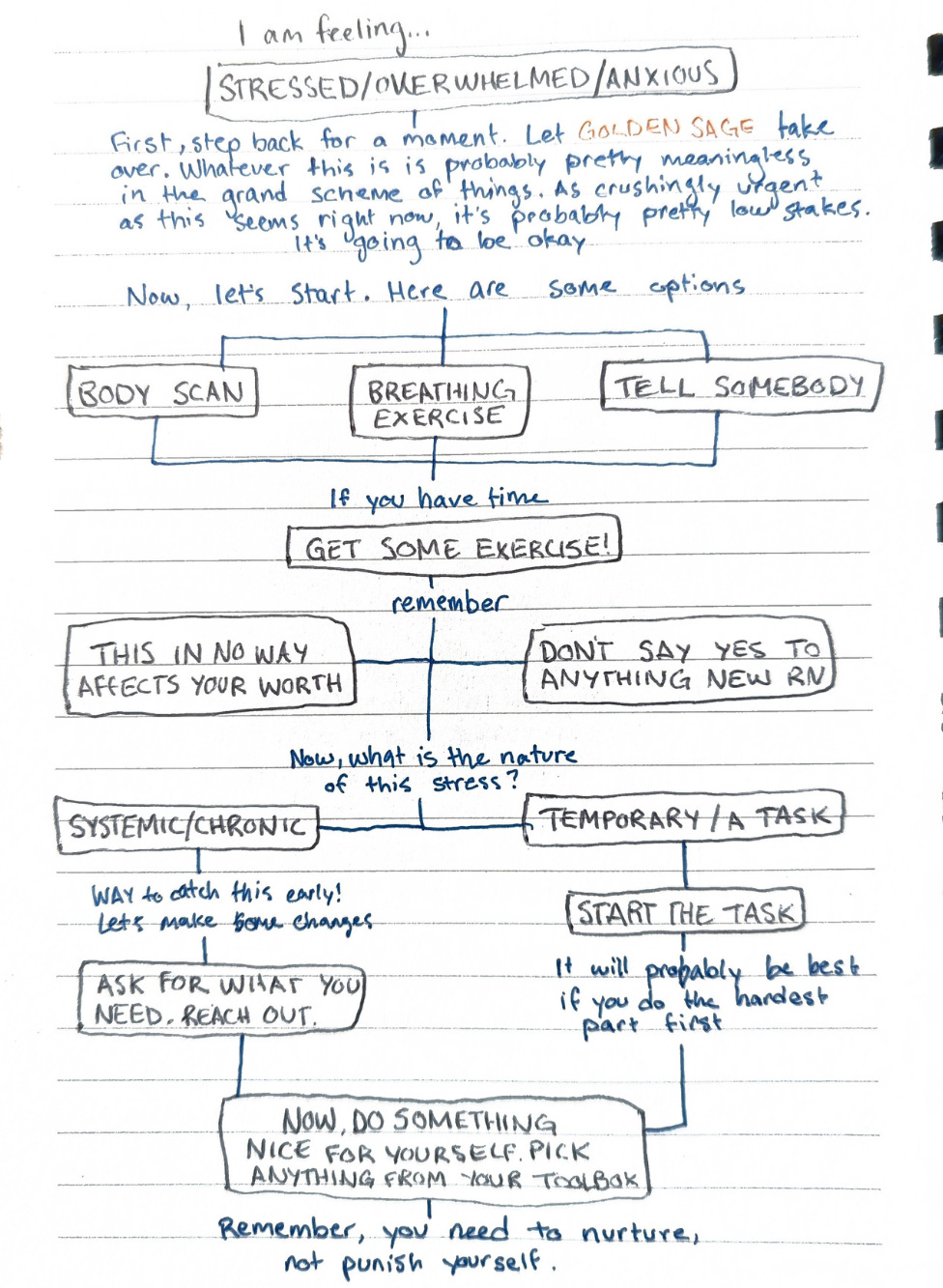
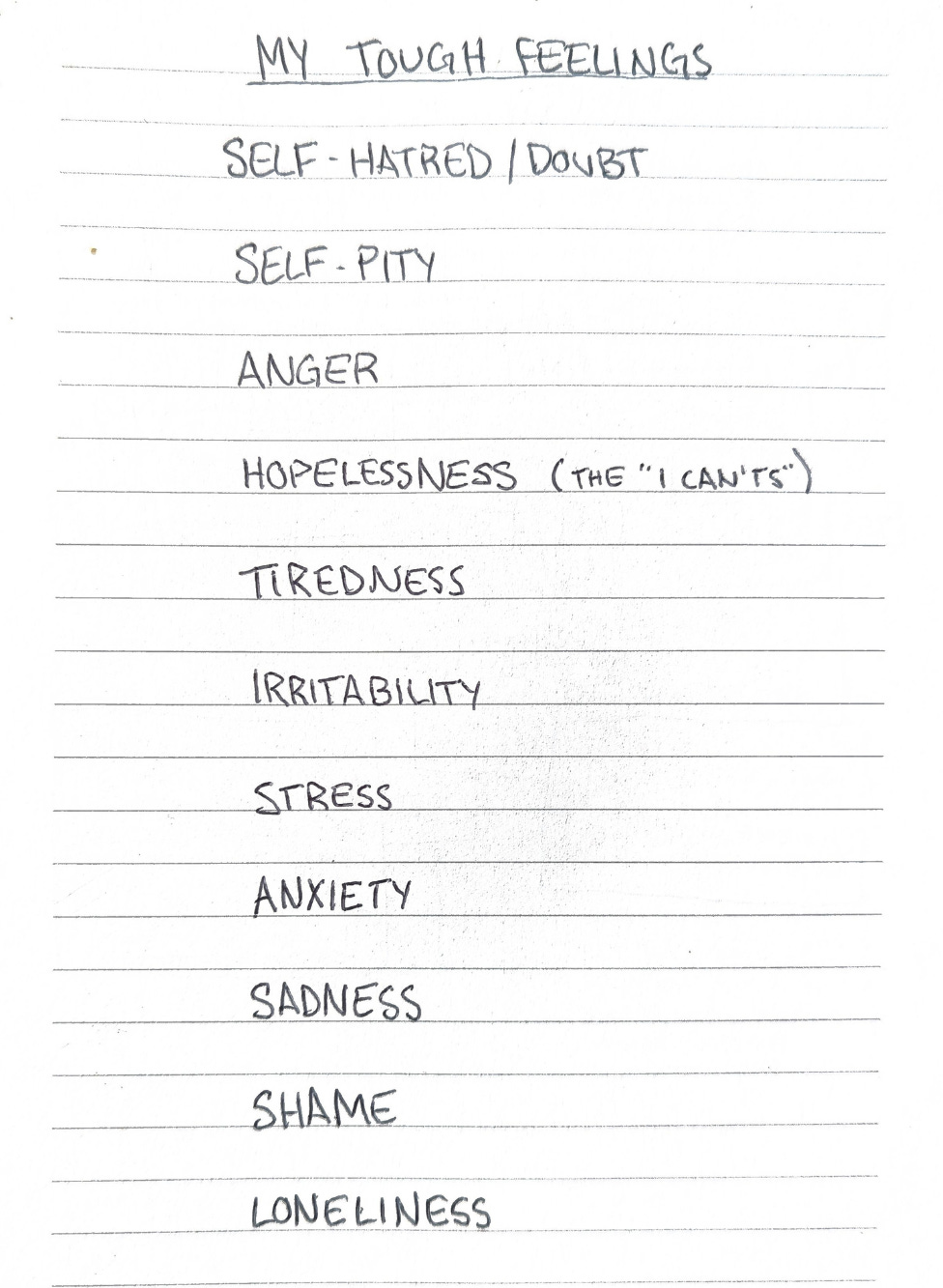
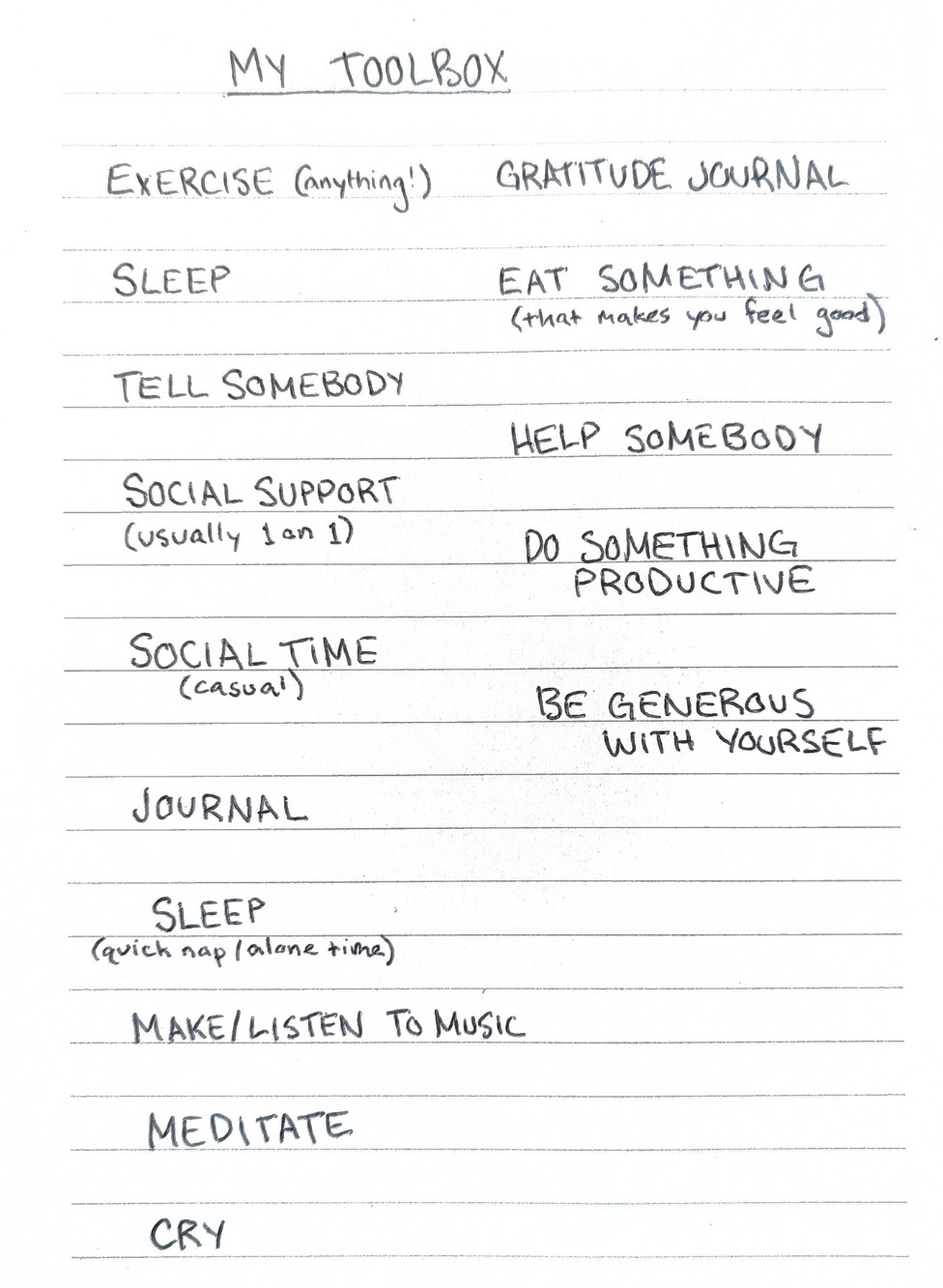
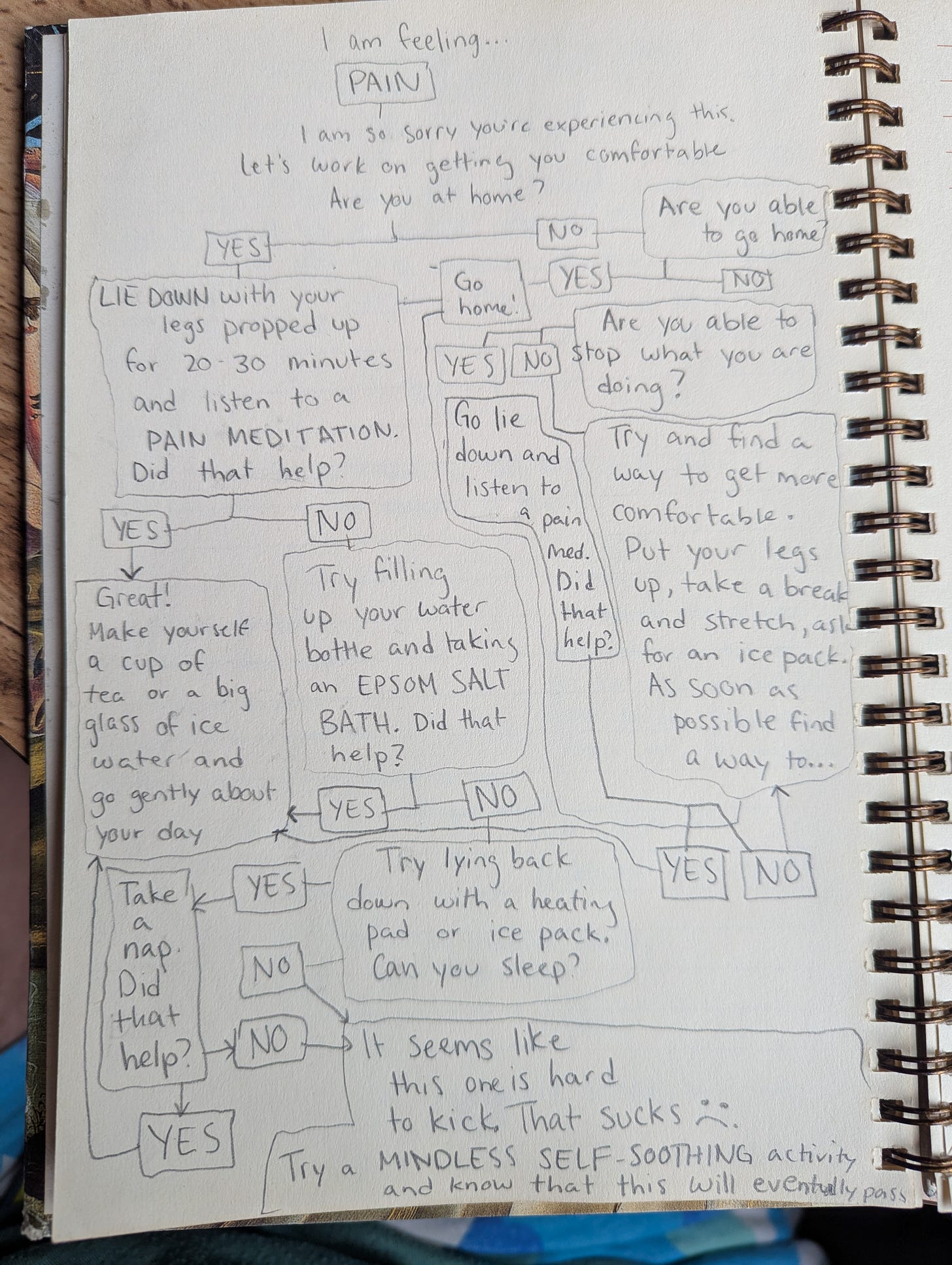
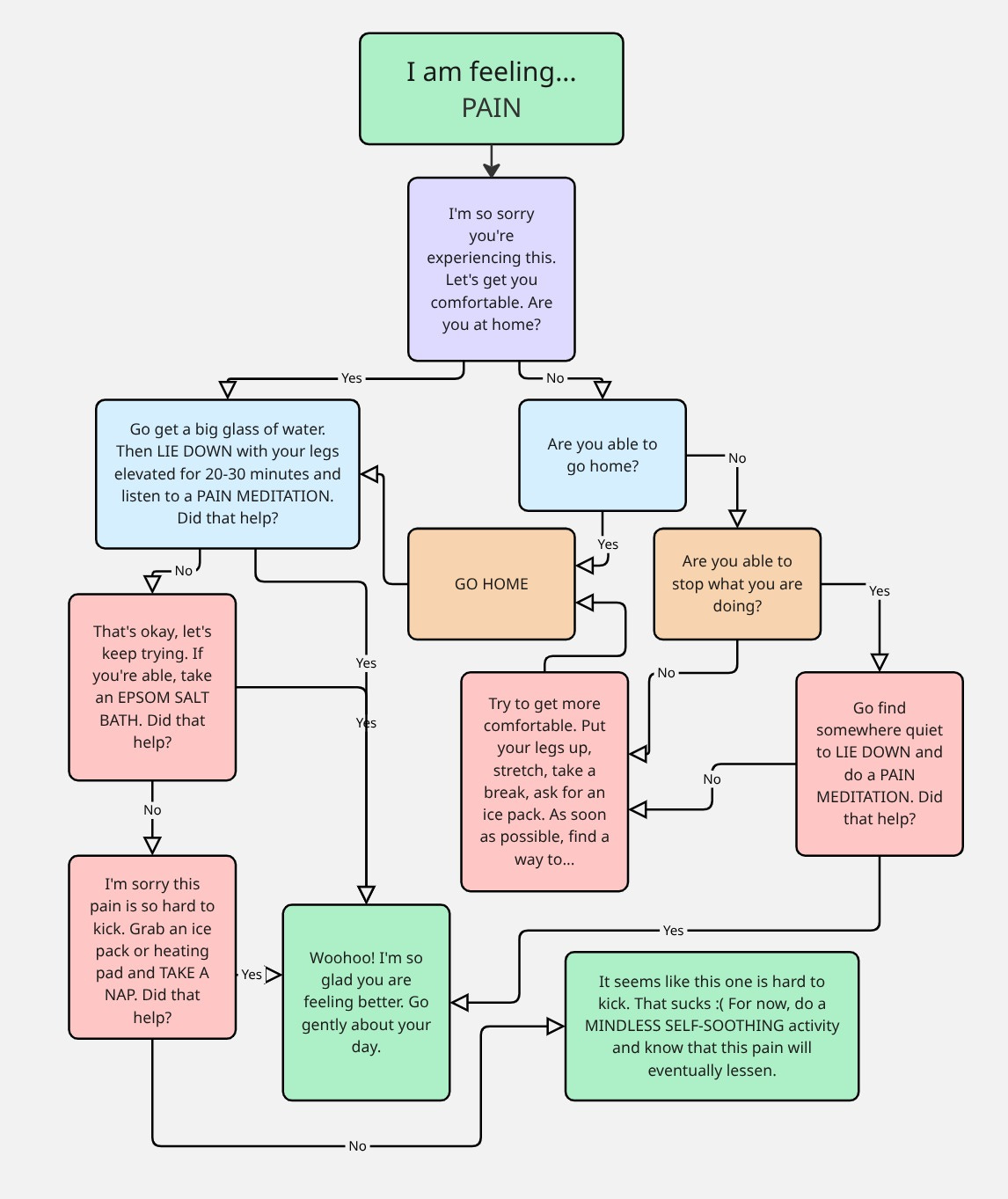
This is really beautiful. Thank you for sharing something so personal. It’s incredibly helpful.
This are great! I found them useful to look at, and I can see how very useful it would be to make my own! Thanks for posting this.